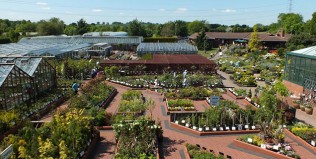Height of Plants
The height stated in our plant descriptions is an approximate height after 10 years for all woody plants, which includes trees, shrubs, conifers, roses and hydrangeas. It is not an exact science as so many factors can influence a plant’s height including soil type, aspect, microclimate and seasonal climatic variations.
Height of Shrubs (including hydrangeas and rhododendrons): The height stated in our descriptions is an approximate height after 10 years.
After 10 years, most shrubs will continue to grow, but usually at a slower rate. A shrub which reaches 2 metres (6ft.) in 10 years will generally achieve another 10% to 20% increase in height over the next 10 years.
Some shrubs (e.g. some acers) develop more tree-like proportions as they mature and, where this is the case, we will state it in the description.
Height of Trees: We have classified trees as those woody plants typically developing a single trunk with lateral branches. In our descriptions we classify their size as Very Small, Small, Medium or Large.
Very Small trees: up to 1.25 metres (4ft.) after 10 years
Small trees: up to 3 metres (10ft.) after 10 years
Medium trees: up to 5 metres (16ft.) after 10 years
Large trees: over 5 metres (16ft.) after 10 years
After 10 years, most trees will continue to grow at around the same rate per year. A tree that reaches 3 metres (10ft.) in 10 years will generally double in height over the next 10 years. If it is a top-grafted weeping tree the increase in height will be minimal after 10 years.
Height of Conifers: The height stated in our descriptions is an approximate height after 10 years.
After 10 years, most conifers will continue to grow at around the same rate per year. A conifer that reaches 4 metres (12ft.) in 10 years will generally double in height over the next 10 years.
Height of Roses: The height stated in our descriptions is an approximate height after 10 years.
After 10 years roses are more variable in growth rates but, as a general rule, most bush roses of all types will not grow much more after 10 years. Climbing and rambling roses are an obvious exception, but most of these can be controlled by regular pruning.
Height of All Other Plants (including hellebores, hepaticas, cyclamen, snowdrops, lewisias, salvias, herbaceous plants, ferns, heathers and alpines): The height stated is an approximate flowering height which is usually achieved within a year and generally will not vary very much after that.





